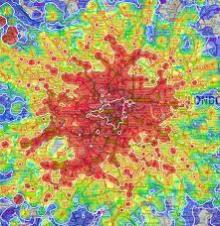Welcome

The Geospatial Center will also integrate existing Stony Brook expertise in GIS and Remote Sensing education and research. The Center will enable our students and faculty to be more competitive in the job and research grant markets. The professional Geospatial related services offered through the Center will position Stony Brook University as the preeminent Geospatial resource on Long Island and in the academic community.
About GIS:
Geographical Information Systems (GIS) can integrate and relate any data with a spatial
component (location), regardless of the source of the data. These systems integrate
methodology capable of capturing, querying, analyzing, and displaying geographically
referenced information; that is, data identified according to location.
The GIS software is a comprehensive set of tools that provide a way to integrate these data so that it can analyze in parts or as a whole and leverage this information to make critical decisions in business, urban and regional planning, environmental management, health services, and many other applications in research and resource planning.
The local and national job markets for GIS professionals are very strong and are expected to grow substantially in the foreseeable future. GIS professionals work in a variety of settings, including the private sector (for example, logistics and market analysis), public sector at the local, state, and national levels, in academics and research, and in GIS software firms. Employers are seeking individuals with the skills and knowledge required to solve the increasingly complex problems faced by today’s businesses and government agencies.
About Remote Sensing:
Remote sensing is a group of techniques to collect information about an object or
area of interest from a distance. The instruments used are collecting data from less
than a meter to several thousands of kilometers away versus in-situ sensing where
the instrument is in physical contact with the object being measured. Remote sensing
instruments can collect and record data passively, such as photographic cameras, thermal
infrared systems or mechanical scanners, where only naturally emanating energy is
detected; or instruments can be active where artificially produced energy is reflected
off a target and recorded such as with radar or sonar systems.
Stony Brook University has a long history of innovative remote sensing use and design. From deep Ocean or Earth sensing to collecting data on Mars and the Moon, Stony Brook researchers are there.
